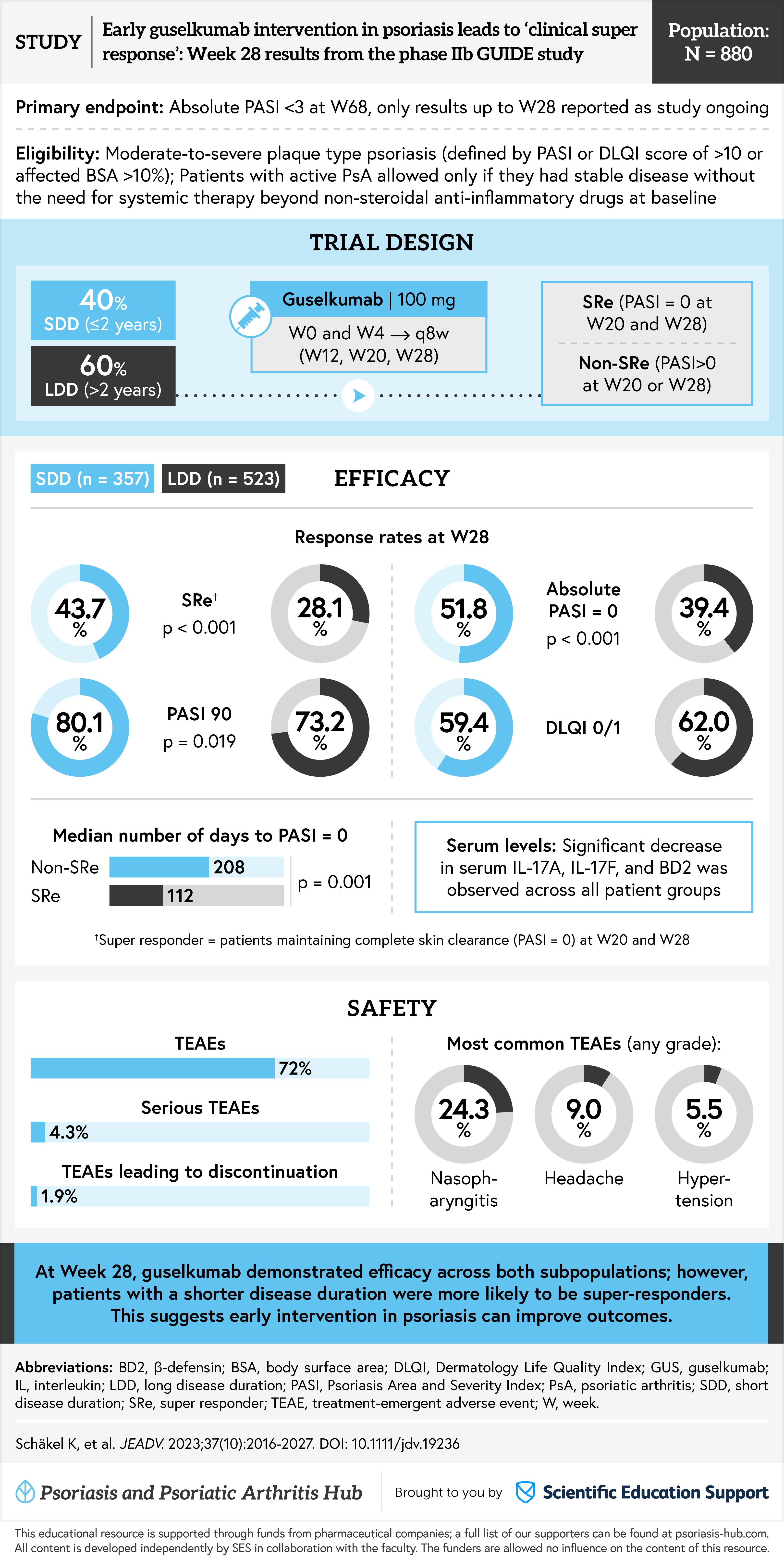All content on this site is intended for healthcare professionals only. By acknowledging this message and accessing the information on this website you are confirming that you are a Healthcare Professional.
The pso Hub website uses a third-party service provided by Google that dynamically translates web content. Translations are machine generated, so may not be an exact or complete translation, and the pso Hub cannot guarantee the accuracy of translated content. The pso and its employees will not be liable for any direct, indirect, or consequential damages (even if foreseeable) resulting from use of the Google Translate feature. For further support with Google Translate, visit Google Translate Help.
The PsOPsA Hub is an independent medical education platform, supported by educational grants. We would like to express our gratitude to the following companies for their support: UCB, for website development, launch, and ongoing maintenance; UCB, for educational content and news updates. The funders are allowed no direct influence on our content. The levels of sponsorship listed are reflective of the amount of funding given.
Now you can support HCPs in making informed decisions for their patients
Your contribution helps us continuously deliver expertly curated content to HCPs worldwide. You will also have the opportunity to make a content suggestion for consideration and receive updates on the impact contributions are making to our content.
Find out more
Create an account and access these new features:
Bookmark content to read later
Select your specific areas of interest
View psoriasis and psoriatic arthritis content recommended for you
Visual abstract | Early guselkumab intervention in psoriasis leads to 'clinical super response': Week 28 results from the phase IIb GUIDE study
Do you know... What percentage of patients with a short disease duration were super responders (maintained psoriasis area and severity index = 0 at Week 20 and 28) at Week 28?
The Psoriasis and Psoriatic Arthritis Hub is pleased to present a visual abstract summarizing Week 28 data from the ongoing phase IIIb GUIDE study, investigating the efficacy of guselkumab in patients with moderate-severe plaque psoriasis with either a short disease duration (<2 years) and or a long disease duration (>2 years).1
Key baseline patient characteristics are shown in Table 1. The baseline mean psoriasis area and severity and dermatology life quality index scores were similar between the groups.1
Table 1. Baseline patient characteristics*
|
DLQI, Dermatology Life Quality Index; LDD, long disease duration; PASI, Psoriasis Area and Severity Index; SDD, short disease duration. *Adapted from Schäkel, et al.1 |
|||
|
Characteristic, % unless otherwise stated |
SDD (N = 357) |
LDD (N = 523) |
Overall (N = 880) |
|---|---|---|---|
|
Sex |
|
|
|
|
Female |
31.9 |
27.9 |
29.5 |
|
Male |
68.1 |
72.1 |
70.5 |
|
Age at baseline, years |
|
|
|
|
<45 |
62.5 |
50.5 |
55.3 |
|
45–65 |
30.8 |
42.6 |
37.8 |
|
>65 |
6.7 |
6.9 |
6.8 |
|
Mean disease duration, years |
1.2 |
20.2 |
12.5 |
|
Mean PASI, score |
18.7 |
19.4 |
19.1 |
|
Mean DLQI, score |
19.1 |
18.9 |
19.0 |
|
Patients with prior systemic and/or biologic therapy |
24.6 |
68.3 |
50.6 |
The results from this study have demonstrated that early intervention with guselkumab in patients with psoriasis may lead to a better clinical response, which could lead to overall better long-term outcomes for patients.1

References
Please indicate your level of agreement with the following statements:
The content was clear and easy to understand
The content addressed the learning objectives
The content was relevant to my practice
I will change my clinical practice as a result of this content


